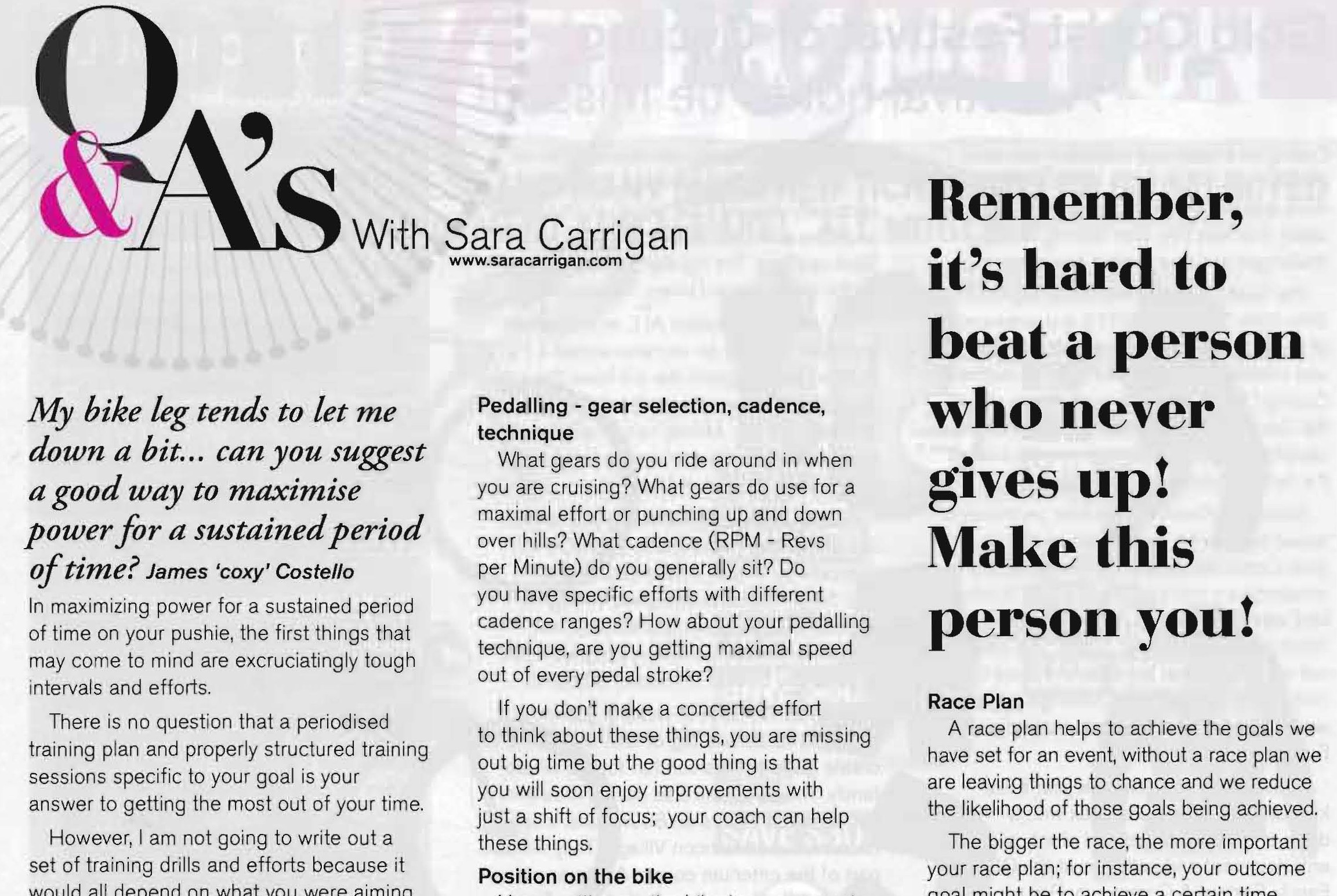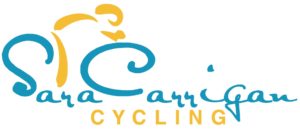Posted by Sara Carrigan – Contributor to Coast Multisport Magazine
Maximize power for a sustained period of time
In maximizing power for a sustained period of time on our pushie, the first things that may come to mind are excruciatingly tough intervals & efforts!
There is no question that a periodised training plan and properly structured training sessions specific to your goal is your first answer to get the most out of your time. However, I am not going to write out a set of training drills and efforts because it would all depend on what you were aiming for, your training age, your current fitness level, training phase etc etc
There are many other facets that I can mention to help you get the best out of yourself and they are all centred around efficiency! We need to become more efficient at making use of our overall effectiveness! The main area I want to look at is Technique.
TECHNIQUE
Getting on the bike and doing the efforts are certainly the first steps but I see so many riders who don’t pay any attention to their technique, and if that’s you, you are losing out … especially if you have limited time to train! It doesn’t take any extra time on your part to focus on technique, it just takes a concerted effort while you are already out on your bike, so do it and reap the benefits!
You might spend months training trying to shave a few minutes/seconds off your time, and all that can be doubly achieved with attention to these areas:
1. Posture
The correct posture on your bike increases your stability and control on your bike, allows you to be more efficient, can help you feel more comfortable on the bike, can eliminate pains, and reduces chance of injury. You should be constantly reinforcing the correct posture when atop you pushie whether you are doing max efforts or a recovery ride!
2. Pedalling – Gear selection, Cadence, Technique
What gears do you ride around in when you are cruising? What gears do use for a maximal effort or punching up and down over hills? What cadence (RPM -Revs per Minute) do you generally sit at? Do you have specific efforts with different cadence ranges? How about your pedalling technique, are you getting maximal speed out of every pedal stroke? If you don’t make a concerted effort to think about these things, you are missing out big time but the good thing is that you will soon enjoy improvements with just a shift of focus!! Your coach can help these things.
3. Position on the bike
Your position on the bike is a compromise between aerodynamics, your anatomy, comfort, stability and power production. When was the last time you had a bike set up? This can change quite a lot from when you first started or if you have a new bikes or new shoes/cleats.
4. Pacing strategies
If you have the opportunity to ride over a course before race day, do it! This allows you look for sections such as exceptionally steep hills where you may need particular gears, the road surface (what kind of wheels and tyres to use?), pot holes, the prominent wind direction, and any dangerous sections like sharp corners or descents. It is most important to pay particular attention to the transition area/finish line and the final kilometre and know exactly the distances to the finish or the last 500m or so.
Knowing the course allows you to then pace it correctly so that you 1) don’t go out too hard, blow up and die a slow, painful ‘death’, or 2) don’t go out too easy and realize you’ve got a heap of energy left in the tank when you finish.
If it is not possible to ride the course because of a lack of time or distance, try to drive the course and take note of the points mentioned above or at the very least, look over the course map and profile.
5. Race Plan
A Race Plan helps to achieve the goals we have set for an event. Without a race plan we are leaving things to chance, and we reduce the likelihood of those goals being achieved. The bigger the race, the more important your Race Plan.
For instance, your outcome goal might be to achieve a certain time. A couple of the process goals you may set to help make this happen could include your pacing strategy, 100% commitment to the task, focus and/or positive self-talk.
Get into the habit of having goal(s) and a Race Plan at local/club races, because you will be practicing the things which you will need to think about when you come to your more important races. By improving your ability to formulate a race plan, you will not only have a better chance of achieving your goals but you will gain confidence from being able to take control in these situations.
6. Mentality
If you are in the right frame of mind, you will be positive, calm, full of energy, and looking forward to putting your Plan into action. No matter what has happened beforehand, you will be ready to dig deep and give your all when the time comes. Remember, it’s hard to beat a person who never gives up! Make this person you!
View full article here or visit Coast Multisport website


